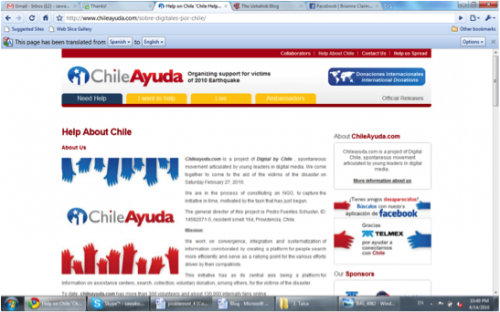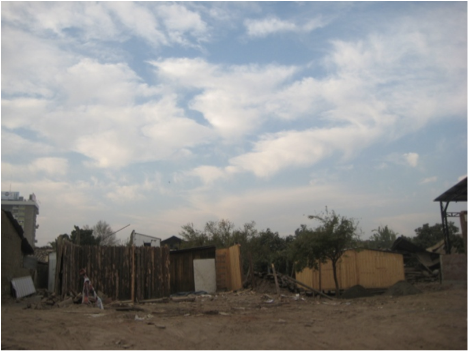Sawako Sonoyama is a graduate student at Columbia University's School of International and Public Affairs (SIPA). She and fellow student Diana Rodriguez have just returned from Chile as part of an Ushahidi-Chile field mission.
An 8.0-magnitude earthquake hit southern Chile on Feb. 27, just over a month before we traveled to the capital city, Santiago. Although weeks have passed and the immediate crisis has subsided, the earthquake still shakes the daily lives of many Chileans. The Chileans talk about the earthquake every day, as if it was the weather. They look at videos of the earthquake on YouTube. They share stories about what they were doing at 3:30 a.m. on that Saturday. They follow reconstruction carefully. When they hear dogs barking, they worry that another one will hit.
When the earthquakes in Haiti and Chile happened, I remember how Columbia University students wanted to help. In Chile, it became clear that this desire is even stronger when it affects your own people. On our trip, we had the opportunity to meet some of the most passionate Chileans who use Ushahidi, an online data tool used to visualize information submitted by the general public, for crisis management and reconstruction. After spending a month helping to map incidents such as collapsed buildings and electrical outages from inside Columbia University, two members of our team went to Chile to connect with local organizations to determine how Ushahidi could continue to be of use there.
We were immediately blown away with our first meeting with a group called ChileAyuda. ChileAyuda is an initiative spearheaded by digital media leaders that aims to centralize information for the earthquake relief efforts. Their work has been exceptionally successful because the members of ChileAyuda are both innovative entrepreneurs and tech-savvy programmers. With these combined skills, they were able to quickly and effectively engineer the Ushahidi platform, connect organizations, and disseminate their vision. It is exciting to know that ChileAyuda is coordinating the efforts of diffusing Ushahidi on the ground.

Part-way through our trip, we ventured down to Talca to meet a group of IT students at the University of Talca who have a small enterprise called DoingIT. Talca was a stark change from Santiago. En route, we saw the damage increase progressively: blocked streets, collapsed bridges, and constant detours. More than 80 percent of the students at Universidad de Talca come from heavily affected areas, so for them taking action has a direct impact. Taking advantage of the open source nature of the platform, students cloned the Ushahidi map to assist municipalities in the area organize and visualize information needed to serve their populations.

Our last meeting was with a group from Universidad de la Frontera that is interested in using Ushahidi for mHealth. Their goal is to use Ushahidi to improve health care for psychiatric patients by having their family members send text messages to monitor treatment. They hope to work on the 9th region of Chile, the poorest in the country. It is nearly impossible for patients living in remote areas to receive constant monitoring, but without it they could easily relapse. The concept is that health care practitioners can use Ushahidi to visualize how their patients are doing.
Those were only three out of the many organizations we met with on our trip. It is interesting to see the various interpretations and strategies each group had on Ushahidi, but they all shared the same level of passion for their cause. We were pleasantly surprised to learn that so many organizations were already using Ushahidi. This was a first-hand demonstration of the value of open source programming. Now that we have seen how Ushahidi has been used for crisis-mapping immediately after the earthquake, it will be interesting to see how different applications will blossom in the long-term.